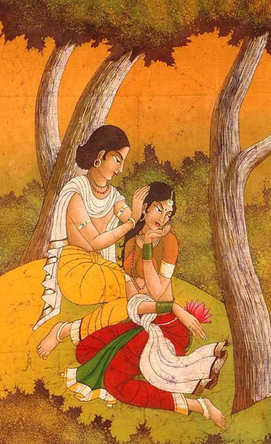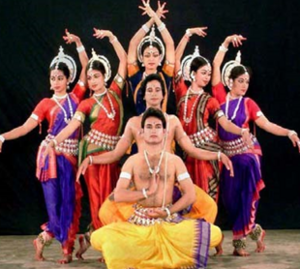Talk:The Sixty-Four Hindu Arts (Kalāḥ)
By Vishal Agarwal
In ancient Vedic society, mastery of 64 arts and skills was regarded as essential for a cultured and accomplished life. These included diverse disciplines such as sculpting, painting, music, cooking, architecture, and physical activities like wrestling and chariot racing. The ṛṣis and scholars of India wrote extensively on these subjects, exploring them with remarkable detail and scientific precision. Although many of these texts have been lost over time, several still survive, offering insights into the vast and sophisticated knowledge systems of ancient India.
Cooking Among the oldest treatises on culinary art is the Pākadarpaṇa, attributed to King Nala. This text provides recipes and methods of cooking with ingredients native to ancient India. Interestingly, it contains no mention of tomatoes, potatoes, corn, or green peppers, as these crops were introduced from the Americas much later.
A well-known story from the lives of King Nala and his wife Damayantī illustrates both devotion and culinary mastery. After being separated due to misfortune, Damayantī found employment in a royal palace, unaware that Nala was serving as the cook in the same kitchen. One day, she tasted the food prepared there and immediately recognized the unique flavor of her husband’s cooking. The couple was joyfully reunited thereafter—perhaps a reminder that fathers, too, can be excellent cooks!
Music, Dance, and Drama Hindu Dharm has always celebrated music and dance as divine expressions. These art forms are integral to religious and social life, performed on occasions ranging from temple festivals to family celebrations. Even in regions like Indonesia—where Hinduism is no longer the majority faith—many classical dances still depict stories from Hindu epics such as the Rāmāyaṇa and the Mahābhārata.
Perhaps the world’s oldest and most comprehensive treatise on performing arts is the Nāṭyaśāstra of Bharatamuni, composed in approximately 6,000 verses. It describes in detail the techniques of drama, dance, stagecraft, and emotion. Tradition holds that Bharatamuni derived inspiration for his work by observing Bhagavān Śiva’s tāṇḍava dance and recording its intricate movements and rhythms.
Ṛṣi Nārada also composed an influential text on music, which continues to guide musicians to this day. The Vīṇā, mentioned in the Vedas, is considered one of the world’s earliest stringed instruments. Can you name some other stringed instruments that you have seen?
In Hindu Dharm, music and art are viewed as sacred paths to divine realization. This contrasts with certain other traditions, such as Islam, where music is often regarded as impermissible. In the Hindu view, music is a spiritual discipline that uplifts the mind and connects the devotee to Bhagavān. The Sāmaveda, one of the four Vedas, is entirely dedicated to musical chanting. Even today, there exist nearly 8,000 melodic patterns used to sing the Sāmaveda, though ancient tradition suggests that many more once existed.


